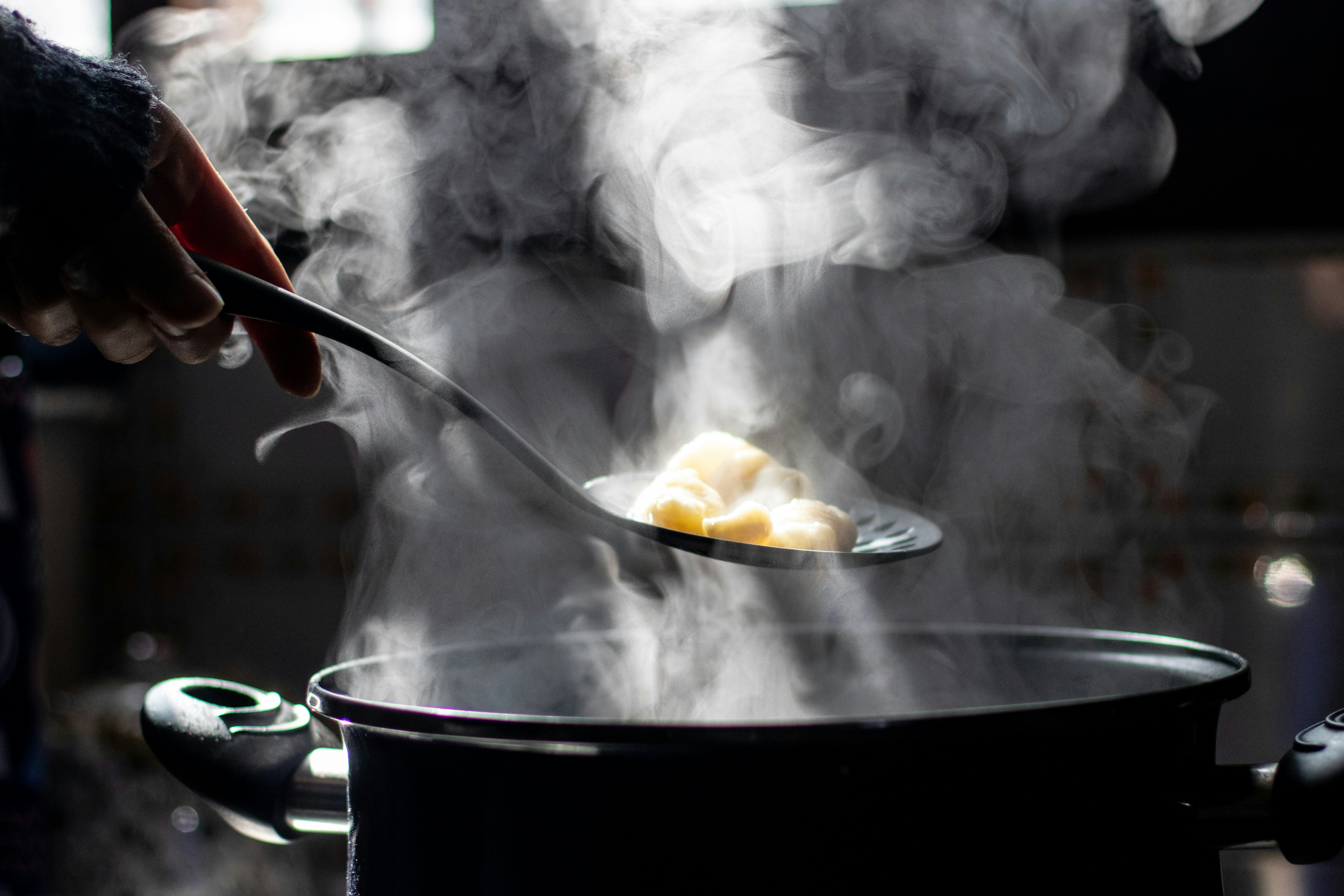Transform Leftovers into Culinary Delights with Creative Science
Have you ever stood in your kitchen, staring down a pile of leftover food, and thought, "What am I going to do with all this?" You're certainly not alone! In a world obsessed with meal prep and zero-waste living, utilizing leftovers has never been more essential—nor more exciting. Enter the fascinating realm of “Culinary Forensics,” where we’ll decode the science behind transforming yesterday's meals into today's gourmet delights. By exploring innovative techniques and flavor pairings, you’ll discover that your leftovers might just hold the key to your next culinary masterpiece.
The Art and Science of Leftover Transformation
Leftover food doesn’t have to mean boring meals. Instead, it can become the canvas for your imagination and a way to indulge in unexpected culinary adventures. The concept of culinary forensics combines a scientific understanding of food properties with artistry in cooking. By grasping the principles of flavors, textures, and presentations, you can elevate your meals from mundane to magnificent with just a few tweaks here and there.
From leftover roast chicken to yesterday's pasta, understanding the transformative potential these ingredients hold will change the way you think about them. For an insightful perspective on flavor combinations, check out culinary alchemy; it showcases how the right pairings can completely revitalize ingredients.
Understanding Food Chemistry: The Basics
When we talk about transforming leftovers, it's essential to understand some basic food chemistry. The nature of flavor is complex; it evolves with cooking methods, preparation, and even the temperature at which dishes are served. The Maillard reaction, for instance, is a chemical reaction that occurs when proteins and sugars are exposed to heat, creating rich flavors and enticing aromas. By applying this principle, you can artificially “freshen up” your leftovers, making them taste as good as new—or even better.
How about those sullied vegetables taking up space in your fridge? You can unlock their full potential by roasting them. The dry heat will enhance their natural sugars through caramelization, improving not only their flavor but also their visual appeal. Check out creative recipes that elevate leftover veggies for inspiration!
Reimagining Classic Leftover Dishes

A versatile approach often brings remarkable results. Let’s take a closer look at some classic innovations with leftover ingredients that can be easily achieved at home:
From Roast to Wrap: Chicken Innovations

One of the most ubiquitous leftovers in homes worldwide is chicken. Instead of reheating it the same way, turn it into something exciting. Why not try a spicy chicken wrap? Shred the leftover chicken and mix it with some Greek yogurt, spices, and chopped veggies from last night’s salad. The wrap can serve as a healthy lunch that’s loaded with flavor—and it's a great way to use up those wilting greens!
Pasta Reimagined: Frittatas and Beyond

Leftover pasta can often end up soggy and uninviting, but that doesn’t have to be the case. Imagine transforming last night’s spaghetti into a delectable frittata! Just beat a few eggs, mix them with your pasta, some cheese, and whatever veggies you have lying around, then bake. You’ll have a delicious dish that resembles brunch menu items while making use of leftovers in a creative way.
Soup: The Ultimate Leftover Solution

Soup is the ultimate leftover transformator—throw anything into a pot, and you can create a culinary masterpiece! Use stored remnants of veggies, proteins, grains, and spices to brew up a warm, comforting soup. With a few dashes of seasoning, you can easily create a flavor explosion. Don't limit yourself to traditional recipes; spice it up by adding unexpected elements such as coconut milk or various herbs to deepen flavor profiles.
For more insights into exploring flavors, check out global influences for enhancing your leftover soups.
The Power of Sauce: A Game-Changer

Sometimes, the simplest way to elevate leftovers is through a killer sauce. Making a rich, homemade sauce not only amps up flavor, but it also disguises leftover components, transforming them into something unique and appetizing. A blended herb-infused pesto or fiery salsa is all it takes to breathe new life into your meal. Experiment with ingredients like nuts, fruits, or spices to create a remarkable sauce that complements your leftover bounty.
Flavors and Textures: The Importance of Contrast

As we delve deep into the realm of transforming leftovers, it’s essential to bring attention to flavors and textures. A well-thought-out combination can make a dish both visually and gastronomically appealing.
The Joy of Crunch

When dealing with leftovers, incorporating a crunchy texture can significantly enhance the dish. Think of using toasted nuts for a salad or crispy breadcrumbs on a baked casserole; this would enrich the meal not just through flavor but also through varied textures. Experiment with different garnishes that offer crunch and freshness, like pickled vegetables or colorful microgreens, to make your plate pop visually.
Balancing Flavors: Salt, Sweet, Sour, and Bitter

Understanding how to balance flavors can turn your leftover creations into exceptional dishes. For example, adding cream or a sprinkle of sugar can enhance the taste of an overly salty dish. Similarly, a splash of acid, such as vinegar or lemon juice, can brighten flavors and lift a rich or heavy meal. The science behind these taste interactions isn’t just academic; it’s a straightforward way to enhance your cooking no matter what ingredients you have left.
Sustainability and Mindful Cooking

In the quest to transform leftovers into delightful meals, we also come across the broader conversation around sustainability. Wasting food is not only wasteful for your wallet but also for our planet. By being mindful in the kitchen, we can take strides towards more eco-friendly cooking practices.
When altering leftover foods, try to incorporate seasonal ingredients that are local to your area. This will not only enhance flavor, but it will also cut down on your carbon footprint. Refer to resources such as the EPA's guidelines for tips on reducing food waste.
Embracing Culinary Tools for Innovation

Don’t underestimate the role of kitchen tools and gadgets in your leftover transformation journey. When equipped with the right tools, you can elevate your culinary creations to unforeseen heights.
Beyond Basic Knives: Advanced Techniques
Using tools like immersion blenders or food processors can be game-changers, allowing you to create sauces, purees, and even dips that will transform the way you perceive leftovers. For instance, left-over mashed potatoes can be blended with cheese and herbs to form delicious potato cakes!
Smart Appliances: Pressure Cookers and Air Fryers
Today’s technology, such as pressure cookers and air fryers, can also add a layer of complexity to your creations. A pressure cooker can help soften tough residual meats, while an air fryer can lend a delightful crisp when reheating leftovers. The art of fusion, combining machinery and creativity, can elevate your average dish to unexpected masterpieces.
Final Thoughts: Your Culinary Adventure Awaits
In learning how to transform leftovers, you’re not just discovering new recipes; you’re embarking on a culinary adventure that echoes around the world. By decoding culinary forensics, you reveal innovative ways to turn potential waste into culinary gold. So, the next time you find yourself wondering what to do with those uneaten scraps, remember that you have the power to create something extraordinary.
Get creative, be adventurous, and let your leftovers inspire you! Once you've mastered the art of transformation, why stop there? Explore more ways to elevate your cooking by checking out seasonal cooking techniques or unique recipes inspired by your pantry staples to further enrich your culinary repertoire!




